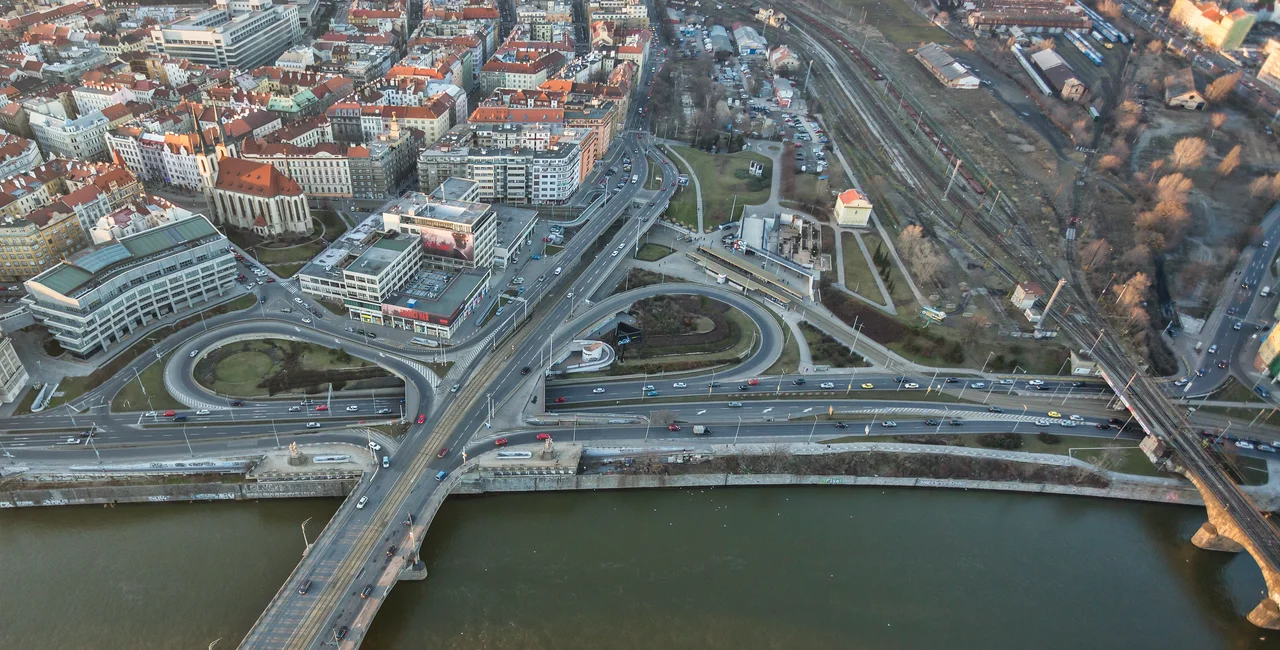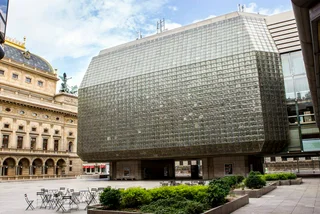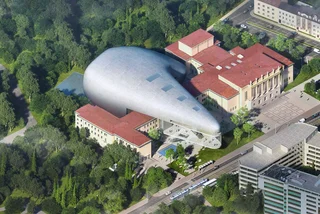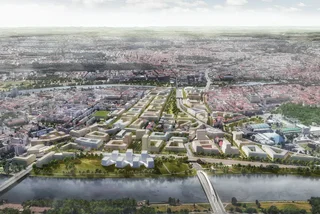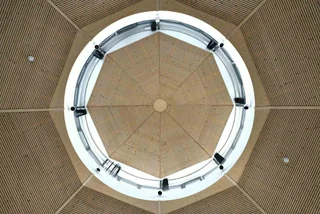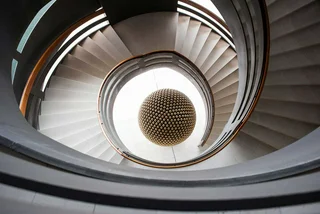While Prague will certainly have a new, modern concert hall in Prague’s Holešovice district on the banks of the Vltava river, nobody yet knows what it will look like. That will change next year, as the design competition for the Vltava Philharmonic Hall has just been formally announced by City Hall and the Prague Institute of Planning and Development (IPR Praha).
A lot is at stake, as an eye-catching facade can become a symbol of a city, as has happened with the Sydney Opera House.
The Vltava Philharmonic Hall will be near the Vltavská metro stop on land currently used by a bridge offramp. The entire area is being redesigned and redeveloped to create a new neighborhood.
A jury headed by Czech architect Michal Sedláček will choose the winning building design in May 2022. The competitors will divide EUR 707,500 in design and sketch royalties. About 60 studios from around the world, including from the Czech Republic, have already expressed interest in the project.
The design is just the next step in a long process. The projected opening date of the new venue is in 2031. It will be a showcase not only for the revitalized Bubny-Zátory area but also the entire city. It will be the first new major cultural space in Prague, aside from multiplex movie theaters, since the Palace of Culture (now the Prague Congress Centre) in 1981 and the New Stage of the National Theatre in 1983. The Historical Building of the National Theatre, the State Opera, and the Rudolfinum all opened at the end of the 19th century.
“Starting today, all interested parties may officially submit their competition applications. Five entities, chosen primarily from among the most renowned architectural studios, will be asked to participate directly. These are Diller Scofidio + Renfro, Snøhetta, Ateliers Jean Nouvel, David Chipperfield Architects and Sanaa. We also expect a strong showing from Czech architects, because as professionals we view this as an exceptionally open competition, which means they’ll have a great chance to win,” jury head Sedláček said.
The deadline for submitting applications is Sept. 30 2021. The competition jury in October 2021 will choose a further 15 teams in addition to the five already chosen. In March 2022, these competitors will submit their architectural designs for the concert hall and its immediate surroundings. The jury will begin evaluating the submitted designs in April 2022 and in May 2022, a winner should be decided, according to IPR Praha.
The state and municipal political representatives involved in the selection include, among others, Culture Minister Lubomír Zaorálek, Prague Mayor Zdeněk Hřib, and Deputy Prague Mayor Petr Hlaváček, and Prague 7 Mayor Jan Čižinský.
”I trust that both Prague and the Czech Republic can look forward to a new and unique modern building thanks to this architectural competition, where we’ll see the very best of world architecture. Thanks to the high interest of Czech and international architects, we are expecting timeless designs that will raise the already rich architecture of Prague one level higher. I’m happy to see that the Vltava Philharmonic Hall has support across the political spectrum,” Prague Mayor Hřib said.
Deputy Mayor Hlaváček pointed out the importance of the project to the redevelopment of the area around the Vltavská metro stop and the wider area of Holešovice.
“It’s also good to be aware that without this new Prague architectural icon resulting from this competition, we’d have real problems starting up a transformation of the whole unattractive area of Bubny–Zátory,” he said.
“The intimate connection of the Vltava Philharmonic Hall building to the Vltava river will, on the one hand, continue the tradition of placing important public buildings on the riverside while, on the other hand, it will emphasize the importance of a new and significant architectural focal point for the town. This has been borne out in the practical experience of other countries and cities, whether Hamburg, Copenhagen or any other city,” Hlaváček added.
The Vltava Philharmonic Hall should have a total of three auditoriums: the main concert hall for about 1,800 persons, a smaller hall for chamber music with a capacity of 700 seats and a multifunctional hall for other genres and events with a capacity of up to 500 seats. The main concert hall should offer state-of-the-art acoustics, excellent spatial and visual characteristics, and facilities corresponding to 21st century standards.
The building should also accommodate both of the significant Prague orchestras – the Prague Symphony Orchestra (FOK) and the Czech Philharmonic. The building should also integrate the music division of the Municipal Library of Prague and other creative spaces, which are to be another important pillar in the building’s construction program.
“The bold architecture of the Vltava Philharmonic Hall on the bank of the Vltava river will spearhead the revitalization of the Bubny–Zátory brownfield. As a result, the Vltava Philharmonic Hall will become a new cultural center for Prague and the entire Czech Republic,” IPR Praha stated.
The competitors will be asked to include elements that have already been determined from public input based on local discussions, an already finished feasibility study, and an opinion survey. There were several workshops between March and June 2021 with the Prague 7 district and local cultural and community participants.
These have, for example, resulted in requests for community spaces to host community events within the Vltava Philharmonic Hall. Music schools would like to use the concert hall, rehearsal rooms and facilities. There is also interest in public outdoor spaces to meet people, relax, or hold different kinds of events. All of these things should be part of the Vltava Philharmonic Hall project.
The survey by polling company Median showed wide local support for the project, ranging from 60 to 70 percent depending on the group. Respondents would welcome coffee shops and restaurants in the general area, while in the immediate surroundings of the hall they preferred places to sit, relax and meet with friends. Another activity that had high support was public film screenings. The idea of more office space, though, was not popular.
“Concerning the frequency of visits to the Vltava Philharmonic Hall, three quarters of residents and visitors to Prague 7 confirmed their interest in stopping by the Vltava Philharmonic Hall at least once a quarter, while one tenth of Prague 7 respondents would even like to come once a week,” IPR Praha said in a press release.
“Of the remaining Prague citizens, two-thirds would head over at least once every three months, and among subscribers, four out of five would like to visit the VPH at least once a month. When visiting the Vltava Philharmonic Hall, the addressed target groups agreed they would like to feel above all dignified, elegant and festive. For the respondents, the least appropriate use of the indoor spaces of the building was as workplaces,” IPR Praha added.
After the design is chosen, the next step will be to create the project documentation and obtain building permits. If everything goes according to plan, the entire second phase of the project should be completed in 2025.
The third and final stage is the selection of a building contractor, which should happen in 2026. Construction would one year later and finish in 2031. The direct construction costs of the Vltava Philharmonic Hall itself were estimated at CZK 4.9 billion in January 2021. Economic analyses recommend the investment should be divided between the state, the capital city, and the private sector. According to estimates, this brings the total costs to build the Vltava Philharmonic Hall as high as CZK 6.1 billion.












 Reading time: 6 minutes
Reading time: 6 minutes 